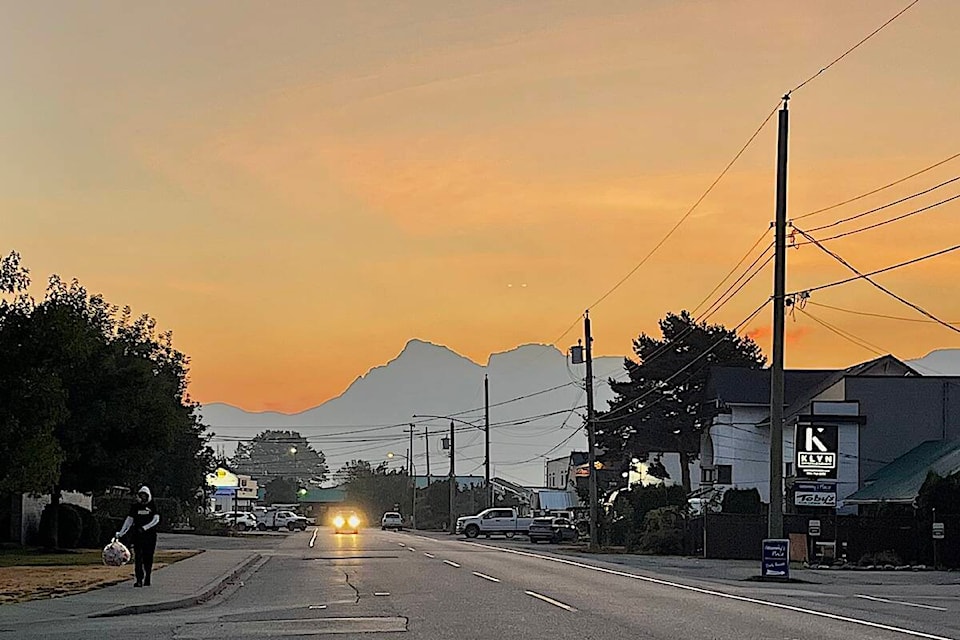Fine particulate matter suspended in the air from wildfire smoke is still hanging around the Eastern Fraser Valley on Friday (Oct. 7), prompting Metro Vancouver to extend its earlier air-quality advisory from Oct. 4.
Although the air “has improved slightly,” in communities from Chilliwack to Hope, the smoke particles are still filling watersheds and valleys from wildfires burning near Chilliwack Lake, near Hope and in Washington State.
The special air quality statement of Oct. 7 was issued for the Eastern Fraser Valley, but there were similar alerts for regions of the Fraser Canyon south including Lytton to Choate, and Similkameen including Princeton.
“Metro Vancouver is continuing the Air Quality Advisory for the Eastern Fraser Valley that was initiated on Oct. 4 because of high concentrations of fine particulate matter, primarily due to smoke from wildfires burning southeast of Chilliwack (near Chilliwack Lake), near Hope, and in Washington State. Air quality has improved slightly in the Eastern Fraser Valley, but smoke from the wildfires continues to impact some municipalities, including Agassiz, Chilliwack, and Hope.”
The air is clearing faster in communities to the west.
“In other parts of Metro Vancouver and the Central Fraser Valley, air quality and hazy conditions improved due to onshore flow of cleaner marine air,” the statement said.
Reduced fire activity has also been observed at the wildfire burning in Minnekhada Regional Park in Coquitlam.
“Intermittent smoke may be produced from isolated pockets. Smoke concentrations may vary widely across the region as winds and temperatures change, and as wildfire behaviour changes.”
The lack of rain is a big factor.
“It is expected that air quality may not change until there is a more significant change in the weather.”
Fine particulate matter, also known as PM2.5, refers to airborne solid or liquid droplets with a diameter of 2.5 micrometres or less. PM2.5 can easily penetrate indoors because of its small size, and people with health conditions can be at risk.
Metro Vancouver works in cooperation with Environment and Climate Change Canada, Fraser Valley Regional District and BC Ministry of Environment and Climate Change Strategy to look after air quality.
Information about real-time air quality readings for Metro Vancouver and Fraser Valley communities and potential health impacts can be found at www.airmap.ca and www.env.gov.bc.ca/epd/bcairquality/readings/find-stations-map.html.
RELATED: AQ advisory for EFV issued Oct. 4
RELATED: Terrible AQ blanketing FV
Do you have something to add to this story, or a news tip? Email:
jennifer.feinberg@theprogress.com
@CHWKjourno
Like us on Facebook and follow us on Twitter.
